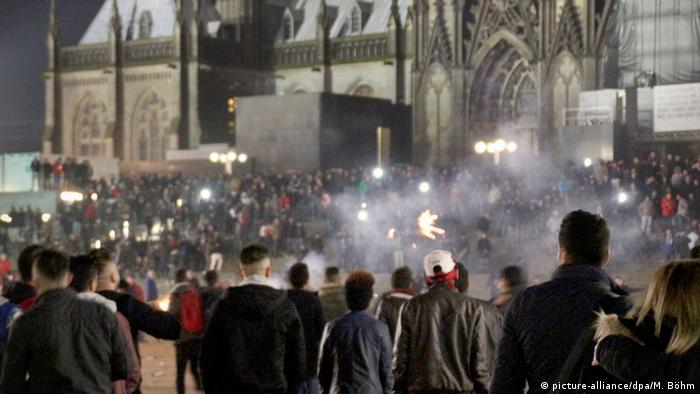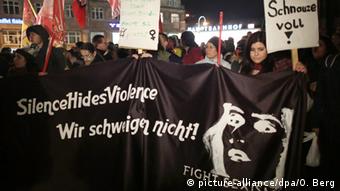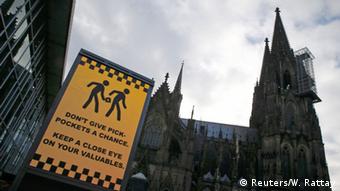CRIME
Report: Cologne-like New Year's Eve attacks in 12 German states
Sex attacks and thefts like the ones which happened in Cologne on New Year's Eve were also reported in 12 other German states, German media say. The information comes from a leaked report of the federal criminal police.
The German broadcasters WDR and NDR, as well as the newspaper "Süddeutsche Zeitung" on Saturday reported that the phenomenon of sexual violence paired with thievery was more widely spread on New Year's Eve than previously thought.
They cited a confidential paper prepared for interior ministers by the Federal Criminal Police Office (BKA). Included in the report were sexual offenses in public places in which the victims were also stolen from, including a type of con in which thieves approach victims and hug or otherwise surprise them, with the aim of distracting them in order to pickpocket.
In Bavaria, 27 such attacks were reported to police, mainly in Nuremburg and Munich. In Bremen, there were 11 reports, in Berlin six and in Baden-Wurttemberg 25. In Hesse, there were 31 cases of indecent assault, sexual insults, thefts and attempted thefts.
Thefts across Germany
The report, dated January 13, said Hamburg and North Rhine-Westphalia (the state where Cologne is located) reported the highest number of offenses. In Hamburg there were 195 complaints, most of them for sexual offenses. Investigators in North Rhine-Westphalia reported 1076 crimes altogether, mainly in the cities of Cologne, Dusseldorf and Bielefeld. That number included 692 bodily harm or property offenses and 384 sexual offenses.
Similar incidents were reported in Lower Saxony, Brandenburg, Saxony, Rhineland-Palatinate and Saarland, albeit on a much smaller scale. Federal police, who patrol main railway stations, reported 43 such notifications.
Though the suspects have not been identified they had been reported as being men of Moroccan, Algerian or Tunisian origin. Across the country the victims were almost always female and the suspects were men aged between about 17 and 30.
Difficult to describe suspects
The report demonstrated the difficulty of describing suspect's origins, with states using different terminology. For example, Baden-Wuerttemberg described one set of suspects as a "US American and an Algerian," another group was described as "suspects who appeared to look Arab." In Hesse, suspects were described as "men of North African/Arab/southern European/eastern European appearance." A report from North Rhine-Westphalia spoke of an "appearance of a migration background" and an "appearance of being foreign" without elaborating what exactly that meant or how it was possible to determine someone's nationality by looking at them.
The investigators concluded that the nature of the reported thefts was a new form of criminality which up until now had not been widely experienced across Germany. The report's authors noted, however, that it provided only a snapshot of the situation, which continued to be "dynamic."
Scotland Yard brought in
Meanwhile, police investigating the Cologne attacks have enlisted the help of specialists from London. The so-called "super recognizers" from Scotland Yard will assist in analyzing video footage from New Year's Eve. Their ability to pick out faces in a crowd is considered superior to facial recognition software.
se/rc (dpa, epd)



No comments:
Post a Comment